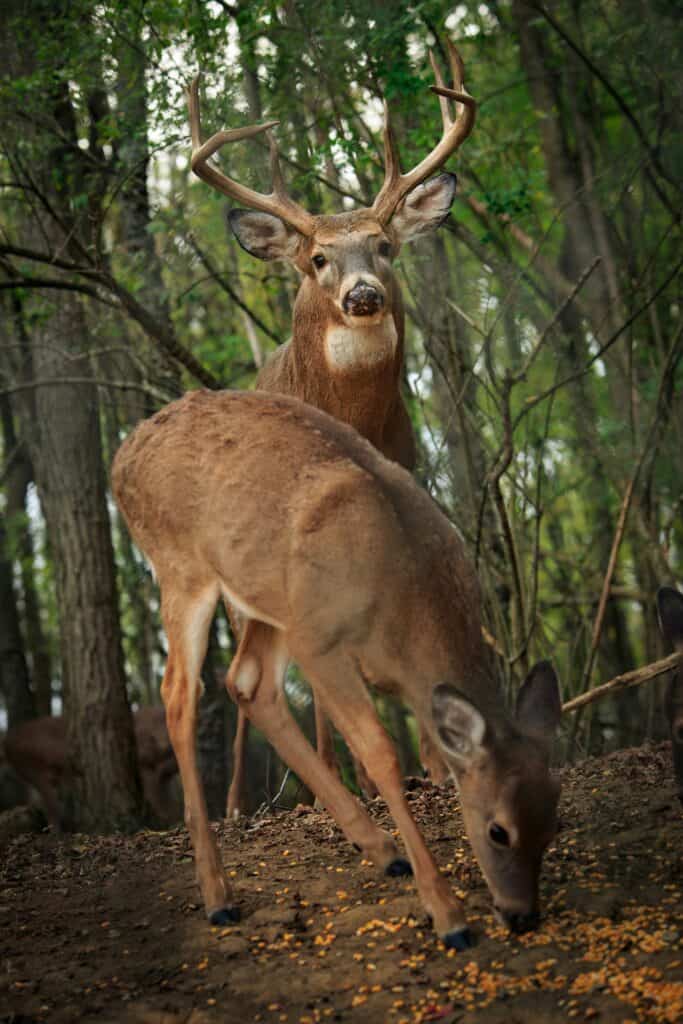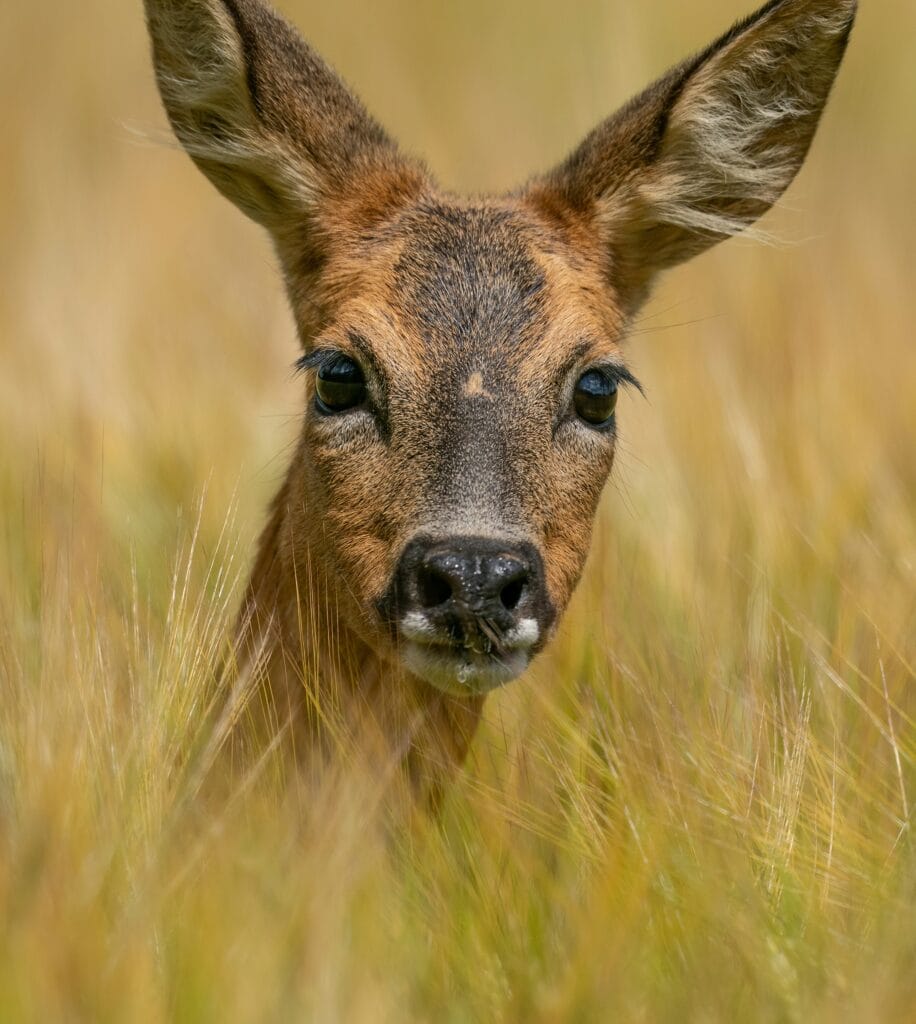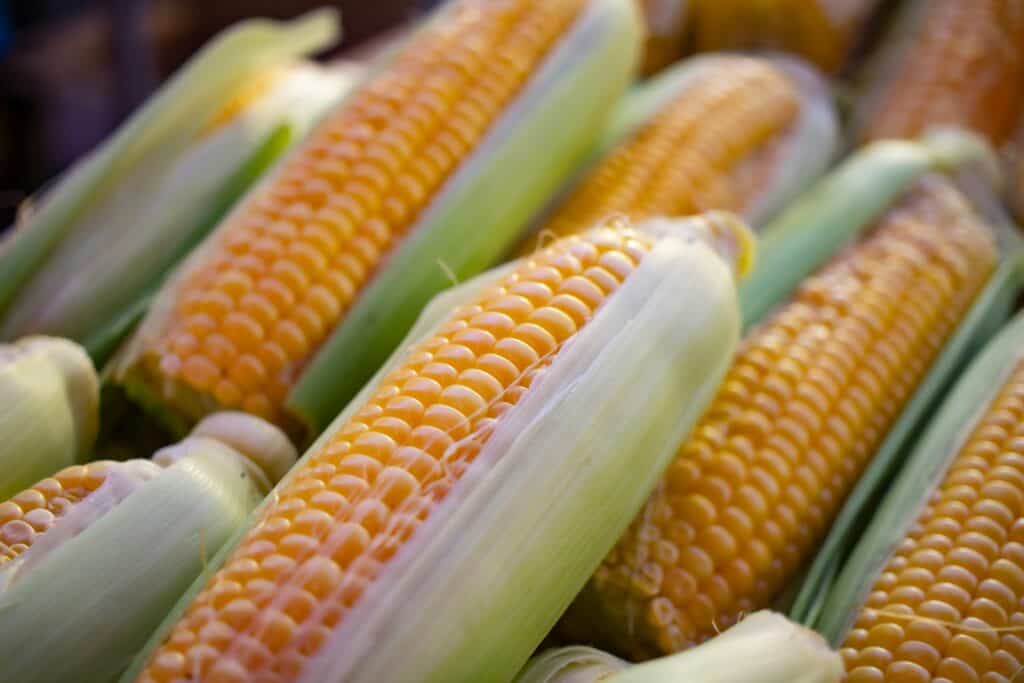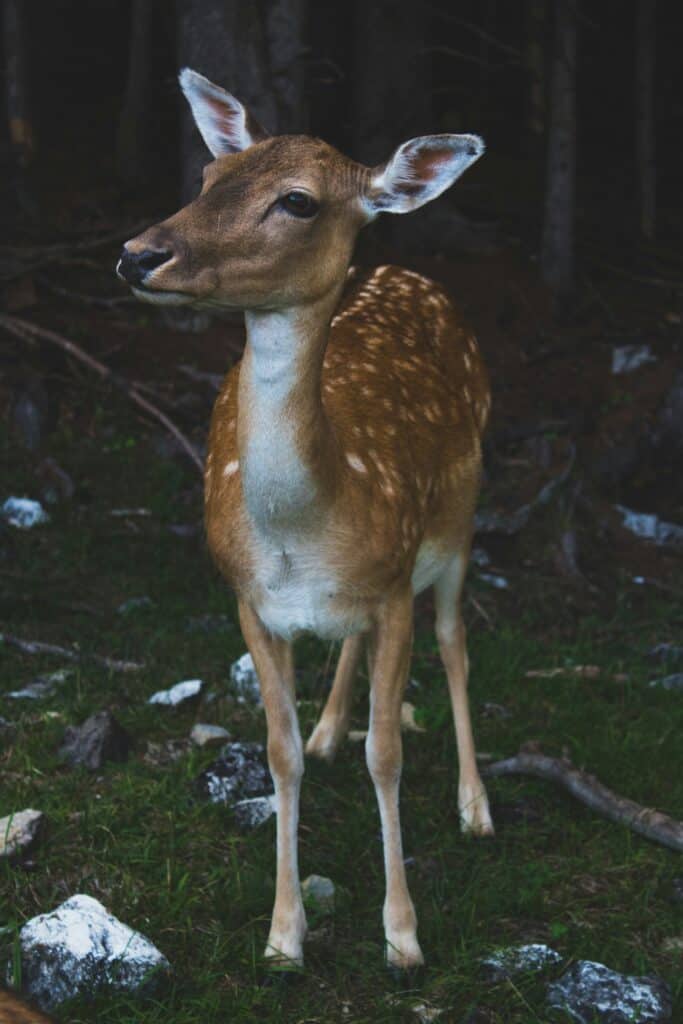
Deer corn is a popular food source for deer, especially in areas where natural food options may be limited. However, the question remains: is deer corn actually healthy for deer? In this article, we will explore the nutritional composition of deer corn, its potential health impacts, and alternatives to consider in a deer’s diet. We will also discuss the role of deer corn in wildlife management and the ethical considerations surrounding its use.
Understanding Deer Nutrition
Before diving into the specifics of deer corn, it is important to understand the nutritional needs of deer. Like any living organism, deer require certain essential nutrients to thrive. Let’s take a closer look at these nutrients and how they contribute to a deer’s overall health and well-being.
Essential Nutrients for Deer
Deer have specific dietary requirements that must be met in order for them to maintain optimal health. These requirements include protein, carbohydrates, fats, vitamins, and minerals. Each of these nutrients plays a crucial role in supporting various physiological functions in deer.
Protein is essential for tissue growth and repair, as well as antler development in bucks. It is made up of amino acids, which are the building blocks of life. Carbohydrates provide the energy needed for daily activities, while fats serve as a concentrated source of energy and insulation, especially during harsh winter months.
Vitamins and minerals are involved in numerous metabolic processes and help maintain proper immune function. For example, vitamin A is important for vision and reproductive health, while calcium and phosphorus are necessary for bone development and strength.
How Deer Digestion Works

The digestive system of deer is adapted to process a variety of plant material, including grasses, leaves, and woody browse. They possess a four-chambered stomach, similar to cows, that aids in the breakdown of cellulose, a complex carbohydrate found in plant cell walls.
Deer are considered ruminants, meaning they have a specialized fermentation process that allows them to extract nutrients from cellulose-rich plant material. This fermentation occurs in the rumen, the first chamber of the deer’s stomach, where bacteria break down cellulose into volatile fatty acids, which are then absorbed by the deer.
After the rumen, the partially digested food moves into the reticulum, omasum, and finally the abomasum, where further digestion and absorption of nutrients take place. This complex digestive system allows deer to efficiently extract nutrients from their plant-based diet.
It is worth noting that deer have a unique adaptation called “caecotrophy.” This process involves the re-ingestion of soft, partially digested fecal pellets, which allows them to extract additional nutrients from their food. This behavior is particularly important during times of limited food availability or when deer need to maximize their nutrient intake.
The Composition of Deer Corn
Deer corn, also known as feed corn or shelled corn, is a commonly used supplemental food source for deer. It is a type of corn that has been harvested and dried, and its composition differs slightly from the sweet corn humans consume.
But what exactly makes up the composition of deer corn? Let’s dive deeper into its main ingredients and nutritional analysis to understand its role in the diet of these graceful creatures.
Main Ingredients in Deer Corn
The main ingredient in deer corn is, unsurprisingly, corn. However, it is worth noting that deer corn may also contain other grains, such as soybeans or oats, as well as added supplements to enhance its nutritional value. These additional grains provide a variety of nutrients that contribute to the overall health and well-being of deer.
When it comes to the added supplements, they are carefully selected to meet the specific nutritional needs of deer. These supplements can include minerals like calcium and phosphorus, which are essential for bone development and growth, as well as vitamins that support overall health and immune function.
Nutritional Analysis of Deer Corn

Now, let’s take a closer look at the nutritional analysis of deer corn. It is important to consider its protein, carbohydrate, and fat content, as well as its vitamin and mineral composition.
Deer corn typically contains around 8-10% protein, which falls below the recommended levels for deer’s nutritional needs. While this protein content may seem low, it is important to remember that deer have evolved to thrive on a diverse diet that includes not only corn but also natural food sources such as leaves and browse, which provide higher protein content.
Furthermore, deer corn is predominantly composed of carbohydrates, primarily in the form of starch. While carbohydrates are an important energy source, an excessive intake of carbohydrates, coupled with a low protein content, may lead to suboptimal deer nutrition. Therefore, it is crucial to provide a balanced diet that includes a variety of food sources to ensure the overall well-being of deer.
Understanding the composition of deer corn and its nutritional analysis can help us make informed decisions when it comes to providing supplemental food for these magnificent creatures. By offering a diverse diet that includes a mix of natural food sources and carefully formulated deer corn, we can support their health and contribute to their thriving population.
Potential Health Impacts of Deer Corn
While deer corn can provide some nutritional benefits, it is essential to be aware of the potential health impacts it may have on deer. Let’s explore the benefits and drawbacks associated with the consumption of deer corn.
Benefits of Deer Corn for Deer
One of the advantages of feeding deer corn is its energy density. Deer corn is a concentrated source of calories that can help deer meet their energy requirements, especially during harsh winter months when natural food sources may be scarce.
In addition, feeding deer corn can attract deer to specific areas, making it easier for wildlife managers to monitor and study deer populations. This can be particularly useful in population control efforts or when conducting research on deer behavior and movement patterns.
Risks and Drawbacks of Deer Corn
While deer corn can provide short-term benefits, there are risks and drawbacks associated with its long-term use as a sole food source for deer. As previously mentioned, deer corn has a relatively low protein content, which can result in inadequate nutrition for deer.
Furthermore, a diet solely based on deer corn may lack the essential vitamins and minerals that deer require for optimal health. This can lead to nutritional deficiencies, which may manifest as weakened immune systems, impaired reproductive function, or stunted growth in young deer.
Another concern with feeding deer corn is the potential for increased susceptibility to diseases, such as Chronic Wasting Disease (CWD). CWD is a transmissible neurological disorder that affects deer and other cervids. While the exact link between deer corn and CWD is still under investigation, reducing the reliance on supplemental feeding may help mitigate the spread of this disease.
It is important to note that deer corn should not be the sole source of nutrition for deer. Supplemental feeding should be used judiciously and in conjunction with a diverse and balanced diet. Providing a variety of natural forage, such as grasses, browse, and fruits, can help ensure that deer receive the necessary nutrients for their overall well-being.
Additionally, it is crucial to consider the environmental impact of feeding deer corn. Excessive feeding can lead to overpopulation and habitat degradation, as deer may congregate in high numbers around feeding sites. This can result in increased competition for resources and damage to vegetation, affecting not only the deer population but also other wildlife species that rely on the same habitat.
In conclusion, while deer corn can offer some benefits in terms of energy supplementation and population management, it is important to weigh these advantages against the potential risks and drawbacks. A balanced approach that includes a diverse diet and responsible feeding practices is crucial for maintaining the health and well-being of deer populations in the long term.
Alternatives to Deer Corn in Deer Diet

Considering the potential risks associated with deer corn, it is crucial to explore alternative food sources for deer that can provide a more well-rounded nutrition profile. Let’s discuss two primary options: natural food sources and supplemental feeding alternatives.
Natural Food Sources for Deer
Deer possess a specialized digestive system that allows them to efficiently extract nutrients from a wide range of plant material. By providing a diverse habitat that includes a variety of grasses, browse, and mast-producing trees, land managers can support the natural foraging behavior of deer.
Ensuring a healthy and balanced ecosystem with an abundance of native vegetation benefits not only the deer but also other wildlife species that rely on similar food sources. Natural food sources provide deer with a wider array of essential nutrients and promote overall biodiversity in the ecosystem.
Supplemental Feeding Options
If natural food sources are limited or in need of supplementation, there are alternative feeding options available to meet the nutritional needs of deer. These options include commercially available deer pellets, which are specifically formulated to provide a balanced diet for deer.
Additionally, land managers can consider planting food plots with a mix of nutritious forage crops, such as clover or alfalfa, that are known to attract and benefit deer. These food plots can provide a diverse range of nutrients and promote healthy deer populations in managed areas.
The Role of Deer Corn in Wildlife Management
Despite the potential drawbacks of deer corn, it can still play a role in wildlife management when used judiciously and as part of a comprehensive strategy. Let’s explore two aspects of deer corn’s role: population control and ethical considerations.
Deer Corn in Population Control
Feeding deer corn in a controlled manner can be an effective tool for population control in areas with an excessively high deer density. By providing supplemental food in specific locations, land managers can concentrate deer populations and have a better understanding of the population dynamics.
This method allows for more effective monitoring and targeted culling, which can help maintain a healthier balance between deer and their ecosystems. However, it is crucial to approach population control with care and in accordance with local regulations and guidelines.
Ethical Considerations of Feeding Deer Corn
Feeding deer corn raises ethical questions regarding the involvement of humans in altering wildlife behavior and natural feeding patterns. It is important to remember that deer are wild animals and capable of finding their own food sources in the wild.
While supplemental feeding can be done with conservation intentions, it is crucial to strike a balance between providing for their needs and allowing them to maintain their natural behaviors and foraging skills. Ethical consideration should be given to the potential negative impacts on both individual deer and the overall ecosystem.
In conclusion, deer corn can provide some benefits as a supplemental food source for deer. However, its nutritional composition, particularly the low protein content, raises concerns about its long-term use as a sole food source. While deer corn can offer a concentrated energy source, its reliance as a primary food option may lead to inadequate nutrition and potential health risks.
Alternatives, such as promoting natural food sources and considering well-balanced supplemental feeding options, can help meet the nutritional needs of deer more effectively. These options provide a wider range of essential nutrients, support biodiversity, and encourage the natural foraging behavior of deer.
Ultimately, the role of deer corn in wildlife management should be approached with careful consideration of population control objectives and ethical standards. Balancing the benefits and drawbacks of deer corn will help ensure the overall health and well-being of deer populations while maintaining respect for their natural behaviors and ecological roles.